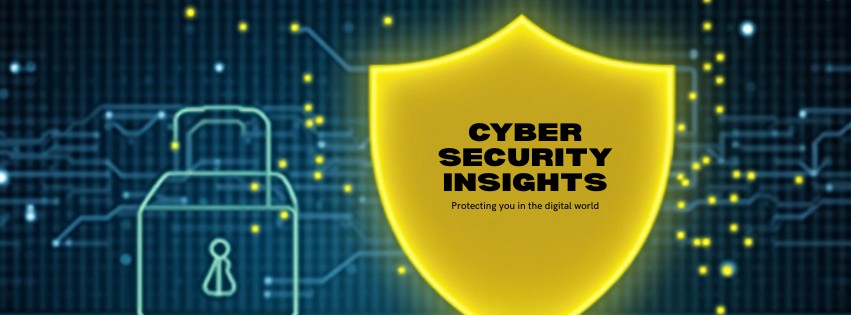
Multiple Schneider Electric Vulnerabilities Let Attackers Inject OS Commands
Multiple Schneider Electric Vulnerabilities: A Deep Dive into Industrial Control System Security
In the evolving landscape of cybersecurity, vulnerabilities within Industrial Control Systems (ICS) present unique and significant threats. These systems often underpin critical infrastructure, and any compromise can have far-reaching consequences, from operational disruptions to physical damage and even danger to human life. Recently, Schneider Electric, a global leader in energy management and automation, addressed multiple vulnerabilities in several of its products. This blog post will delve into these critical flaws, explaining their potential impact, outlining remediation steps, and providing valuable takeaways for organizations managing ICS environments.
Understanding the Threat: Why ICS Vulnerabilities Matter
Industrial Control Systems, including SCADA, DCS, and PLC systems, are integral to modern industrial operations. They control and monitor processes in sectors like energy, manufacturing, water treatment, and transportation. Unlike traditional IT systems, ICS often have unique characteristics, such as real-time operation requirements, long life cycles, and proprietary protocols, making them particularly vulnerable to sophisticated attacks. The exploitation of these vulnerabilities can lead to:
- Operational Disruption: Halting production, utility outages, or critical service interruptions.
- Data Manipulation: Altering process data, leading to incorrect decisions or unsafe conditions.
- Physical Damage: Overpressuring vessels, overheating equipment, or causing mechanical failures.
- Safety Incidents: Endangering personnel working in the vicinity of industrial processes.
- Reputational Damage: Loss of trust and potential financial penalties for affected organizations.
The Schneider Electric Vulnerabilities: A Closer Look
The recent advisories from Schneider Electric highlight several critical vulnerabilities that could allow attackers to inject operating system commands. This type of vulnerability, known as OS Command Injection, is particularly dangerous as it grants attackers the ability to execute arbitrary commands on the underlying operating system, potentially leading to full system compromise.
Outline of Key Vulnerabilities:
-
CVE-2023-40294 (EER and EVM Software): This vulnerability affects specific versions of Schneider Electric EER and EVM Software. It is a critical OS Command Injection flaw that could be exploited by an unauthenticated attacker to execute arbitrary commands on the system. The severity of this vulnerability stems from the fact that it requires no prior authentication, making it easier for attackers to leverage.
- Affected Products: Schneider Electric EER and EVM Software.
- Impact: Remote Code Execution, System Compromise.
- Severity: High.
-
CVE-2023-40295 (EER Software): Another critical OS Command Injection vulnerability found in certain versions of Schneider Electric EER Software. Similar to CVE-2023-40294, this flaw allows for arbitrary command execution. The specifics of the injection points might differ, but the potential ramifications are equally severe.
- Affected Products: Schneider Electric EER Software.
- Impact: Remote Code Execution, System Compromise.
- Severity: High.
-
CVE-2023-40302 (EER and EcoStruxure Power Monitoring Expert): This vulnerability impacts Schneider Electric EER and EcoStruxure Power Monitoring Expert. While the specific details may vary, it’s another instance of an OS Command Injection that could grant attackers control over the affected systems, highlighting a common underlying weakness.
- Affected Products: Schneider Electric EER, EcoStruxure Power Monitoring Expert.
- Impact: Remote Code Execution, System Compromise.
- Severity: High.
-
CVE-2023-40304 (EER Software): Yet another critical OS Command Injection vulnerability affecting Schneider Electric EER Software. The repeated occurrence of this type of flaw across different versions and products within the same vendor’s ecosystem suggests a need for a deeper review of secure coding practices and input validation mechanisms.
- Affected Products: Schneider Electric EER Software.
- Impact: Remote Code Execution, System Compromise.
- Severity: High.
Summarizing the Outlines:
The vulnerabilities uncovered in multiple Schneider Electric products, specifically EER, EVM Software, and EcoStruxure Power Monitoring Expert, primarily revolve around OS Command Injection. This means that if exploited, an attacker could bypass the intended functionality of the software and execute arbitrary commands on the underlying operating system. The consistent presence of these flaws, particularly those requiring no authentication (as is often the case with OS Command Injection), makes prompt remediation crucial. The impact is significant and spans from full system compromise to disruption of critical operations, underscoring the severe risks to industrial environments.
Remediation Actions and Best Practices
Addressing these vulnerabilities requires a multi-pronged approach combining immediate patching with long-term security enhancements. Organizations operating Schneider Electric products should prioritize the following actions:
- Patch Immediately: The most crucial step is to apply the security updates provided by Schneider Electric for the affected products. Refer to the official Schneider Electric security advisories for specific version numbers and download links. Always test patches in a non-production environment first if possible, to ensure compatibility and stability.
- Network Segmentation: Implement strong network segmentation to isolate ICS networks from corporate IT networks and the internet. This reduces the attack surface and limits the lateral movement of attackers even if an initial compromise occurs.
- Least Privilege: Enforce the principle of least privilege for all users and processes. Users and applications should only have the minimum necessary permissions to perform their functions.
- Input Validation: While this is a vendor responsibility for the software, organizations should still encourage secure coding practices and robust input validation in any custom applications or scripts interacting with ICS.
- Regular Security Audits and Penetration Testing: Conduct regular security audits and penetration tests of ICS environments to identify and address vulnerabilities proactively.
- Incident Response Plan: Develop and regularly test a comprehensive incident response plan specifically for ICS environments. This plan should detail procedures for detection, containment, eradication, and recovery from cyberattacks.
- Monitoring and Logging: Implement robust logging and monitoring solutions across the ICS network to detect suspicious activities and potential intrusions in real-time.
- Strong Authentication: Employ strong authentication mechanisms, including multi-factor authentication (MFA), wherever possible, for access to ICS components.
- Vendor Communication: Maintain open communication channels with vendors like Schneider Electric to stay informed about new vulnerabilities and available patches.
Tools to Aid in ICS Security
Several tools can assist organizations in bolstering their ICS cybersecurity posture. Here’s a selection:
| Tool Category | Specific Tools/Solutions (Examples) | Description/Benefit |
|---|---|---|
| Vulnerability Management & Patching | Tenable OT Security, Claroty CTD, Nozomi Networks Guardian, Ivanti Patch Management | Automates the identification of vulnerabilities in OT/ICS assets and facilitates the deployment of patches and updates. |
| Network Monitoring & Anomaly Detection | Claroty Continuous Threat Detection (CTD), Nozomi Networks Guardian, Dragos Platform, Forescout Continuum | Provides deep visibility into ICS networks, detects anomalous behaviors, and identifies potential threats or misconfigurations. |
| Asset Inventory & Configuration Management | Tenable.ot, Axonius, Armis, Claroty Edge | Discovers and inventories all connected ICS assets, providing crucial context for security assessments and incident response. |
| Network Segmentation & Policy Enforcement | Firewalls (e.g., Palo Alto Networks, Fortinet), Industrial Routers with built-in security, TrustZone micro-segmentation | Enforces strict access controls and segment networks to limit lateral movement of threats. |
| Security Information and Event Management (SIEM) | Splunk, IBM QRadar, Microsoft Sentinel | Aggregates and analyzes security logs from various sources across IT and OT, enabling real-time threat detection and incident investigation. |
| Endpoint Detection and Response (EDR)/Anti-Malware for Endpoints | CrowdStrike Falcon, Microsoft Defender for Endpoint, SentinelOne (for Windows-based HMI/Workstations) | Protects the operating systems of HMI and engineering workstations from malware and advanced threats. |
Key Takeaways for ICS Security Stakeholders
The Schneider Electric vulnerabilities serve as a stark reminder of the ongoing challenges in securing industrial environments. Organizations must adopt a proactive and layered approach to ICS cybersecurity:
- Prioritize Patching: Timely application of security updates is paramount for ICS. Hesitation can dramatically increase exposure.
- Visibility is Key: You cannot protect what you cannot see. Comprehensive asset inventory and network visibility are fundamental to effective ICS security.
- Embrace a Holistic Security Strategy: ICS security is not just about technology; it involves people, processes, and policies. Training, segmentation, incident response, and continuous monitoring are all crucial.
- Vendor Collaboration: Maintain strong relationships with your ICS vendors. Stay updated on their advisories and participate in industry information-sharing forums.
- Assume Breach: While prevention is ideal, assume that a breach is possible. Build resilience through robust detection, response, and recovery capabilities.
Conclusion
The vulnerabilities in Schneider Electric products underscore the critical need for vigilance and proactive security measures in industrial control systems. As the interconnectedness of IT and OT environments increases, so does the attack surface. By understanding the threats, implementing timely remediation, leveraging appropriate tools, and adopting a comprehensive security strategy, organizations can significantly reduce their risk exposure and ensure the safe and reliable operation of their critical infrastructure. The lesson is clear: securing our industrial backbone is an ongoing, collaborative effort that requires constant adaptation to the evolving threat landscape.
“`





